Wednesday, Feb. 22, 2006
An online version of the Controls of
Temperature topic covered in
Chapter 3 is now available. An Optional Assignment covering this
material will be distributed in class on Friday.

Energy transport by EM radiation is the most important of the 4 energy
transport processes because it is capable of carrying energy through
empty space; that is something the other three can't do. We'll
briefly
review static electricity, learn something about electric fields, and
then use these concepts to gain a little understanding of EM radiation.

Two charges of the same polarity (like charges) would be
pushed
apart if they are placed near each other. Two charges of opposite
polarity would be attracted. The figure above and the one below can be
found on p. 59 in the photocopied class notes.
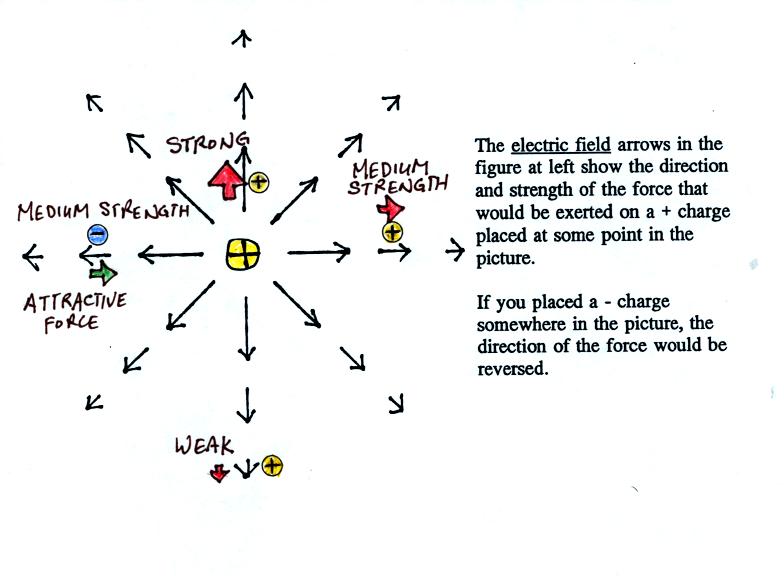
The figure above shows the pattern of electric field arrows
around a central +
charge. The E field arrows show what would happen if a second + charge were placed somewhere in
the picture. Three + charges (in yellow) placed above, to the
right, and below the center charge are
all pushed outward and away from the center charge. The outward
force becomes weaker when the distance between the two charges
increases. A negative charge placed to the left of the center
charge is attracted to the center positive charge.
Click here for some sample
questions about
electric fields and static electricity.
The figures on p. 60 in the photocopied have been broken into 3 parts
below for clarity.

We imagine turning on a source of EM radiation and then a short time
later we take a snapshot. The EM radiation is a wavy pattern of
electric and magnetic field arrows. We'll ignore the magnetic
field lines. The E field lines sometimes point up, sometimes
down. The pattern of arrows repeats itself.
Note the + charge near the right of the picture. At the time this
picture was taking the EM radiation exerts a fairly strong upward force
on the + charge.
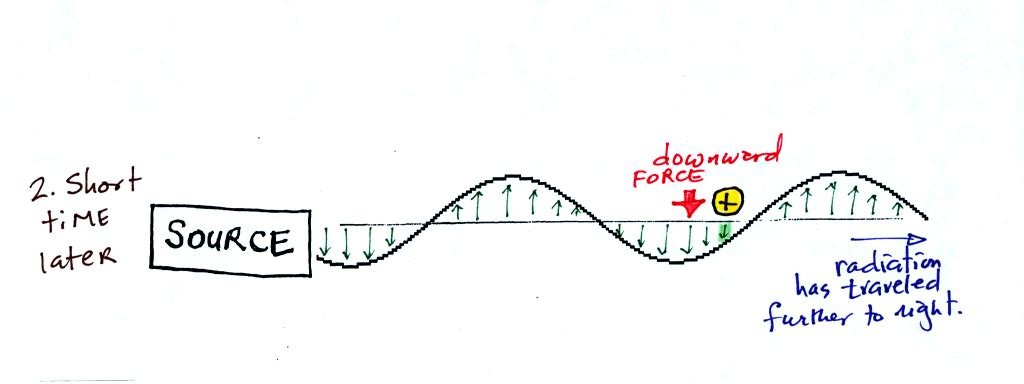
This picture was taken a short time later and the rediation has
traveled a little further to the right. The EM radiation now
exerts a relatively weak downward force on the + charge.
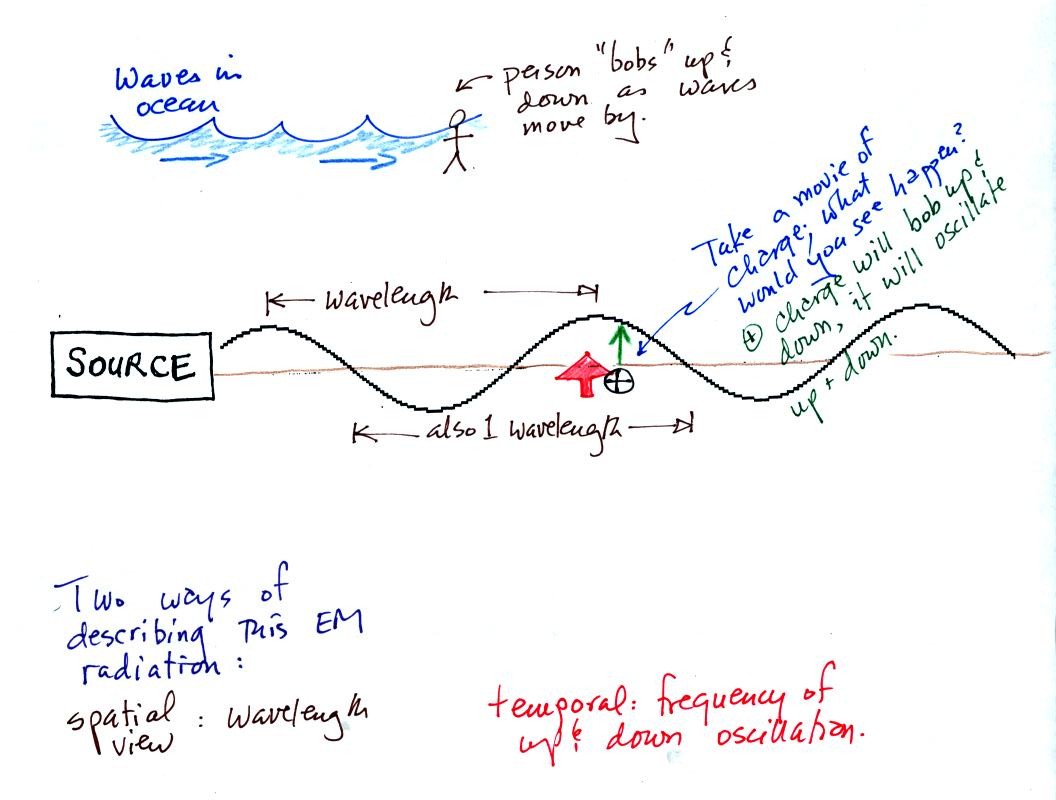
The + charge is now being pushed upward again. A movie of the +
charge would show it bobbing up and down much like a swimmer in the
ocean would do as waves passed by. The wavy pattern used to
depict EM radiation (the wavy line connects the heads of the electric
field arrows) can be described spatially in terms of its wavelength,
the distance between identical points on the pattern. Or you can
describe the radiation temporally using the frequency of oscillation
(number of up and down cycles completed by an oscillating charge per
second)
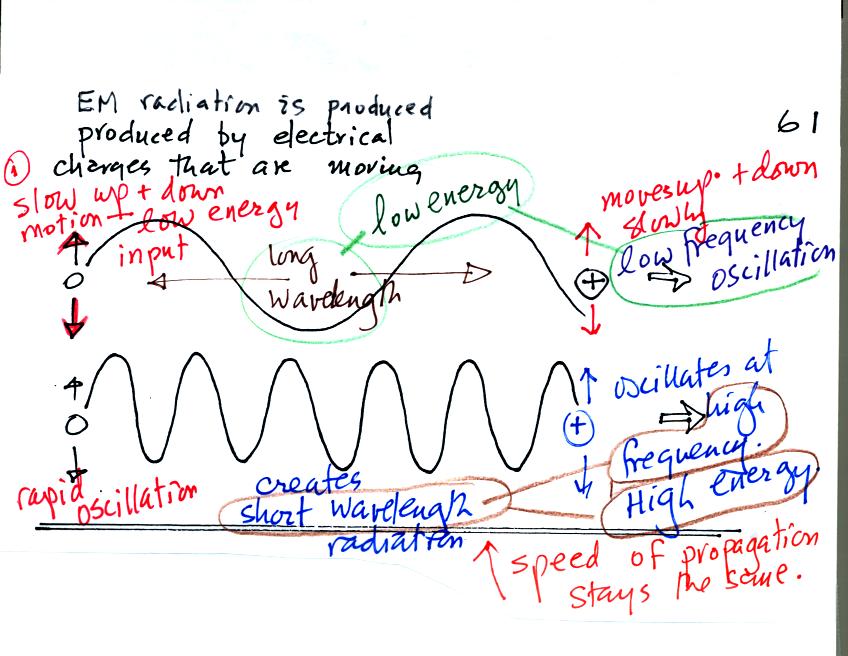
One way of producing is to cause electrical charge to move up and
down. You supply energy to cause the charge to oscillate and EM
radiation is produced and propagates to the right. The EM
radiation encounters a charge somewhere else and causes it to begin to
move up and down. Energy has been transported to the charge.
Slow up and down oscillation produces long wavelength, low energy
radiation.
Fast up and down oscillation produces shorter wavelength, higher energy
radiation.
This relationship can be seen more clearly in the animation
shown in class. Use your mouse to move the slider to the left
to lower the spring tension. Then use the mouse to pull downward
on the right hand charge. It will begin oscillating slowly.
Long wavelength radiation will be produced that propagates to the left
and causes the left hand charge to begin to oscillate at low
frequency. Moving the slider to the right will increase the
spring tension. Pulling down on the right hand charge will
produce shorter wavelength radiation.
Note the speed of progation (in empty space) of long and short
wavelength radiation is the same.
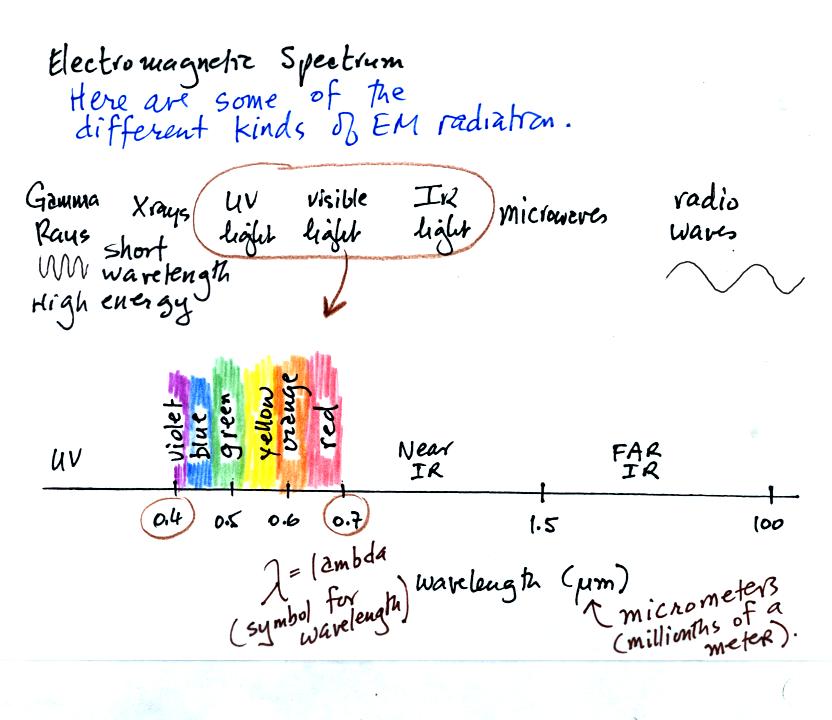
Gamma rays, X-rays, and ultraviolet light are high-energy, short
wavelength forms of EM radiation. Infrared light, microwaves, and
radio waves are longer wavelength, lower energy forms of radiation.
The different colors of visible light have wavelengths that range from
0.4 to 0.7 micrometers. Mixing all the colors of visible light
together produces white light.







